Just 90 minutes from Tokyo by bullet train and you’ll reach Sendai, the largest city in Miyagi Prefecture, the land of mystery in northeastern Japan.
This region might not be as popular as other big cities, but Miyagi has lots to offer when it comes to food!
In this article, we’ll introduce you to some of the best and most ubiquitous regional specialties, and where to try them.
Table of Contents
Where and why food culture in Miyagi Prefecture is special?
Miyagi is one of six prefectures that form the Tohoku region, located on the north of Japan’s main island of Honshu. Sendai is the capital city of the Tohoku region, a destination in and of its own right, as well as serving as a gateway to the rest of Miyagi Prefecture and beyond.
This land is blessed with a strong culinary culture because of its unique geographical and climate conditions. Spring is still cold, summer is milder than other nations, fall is short and it has a long winter with deep snow in the interior.
The East coast faces the Sanriku Rias shoreline towards the Pacific Ocean where warm and cold currents collide. The interior has famous mountains and vast tracts of flat land, which makes rich agricultural products and liquors. Any town you go, you will meet a variety of local cuisines!
Sanma, Pacific saury
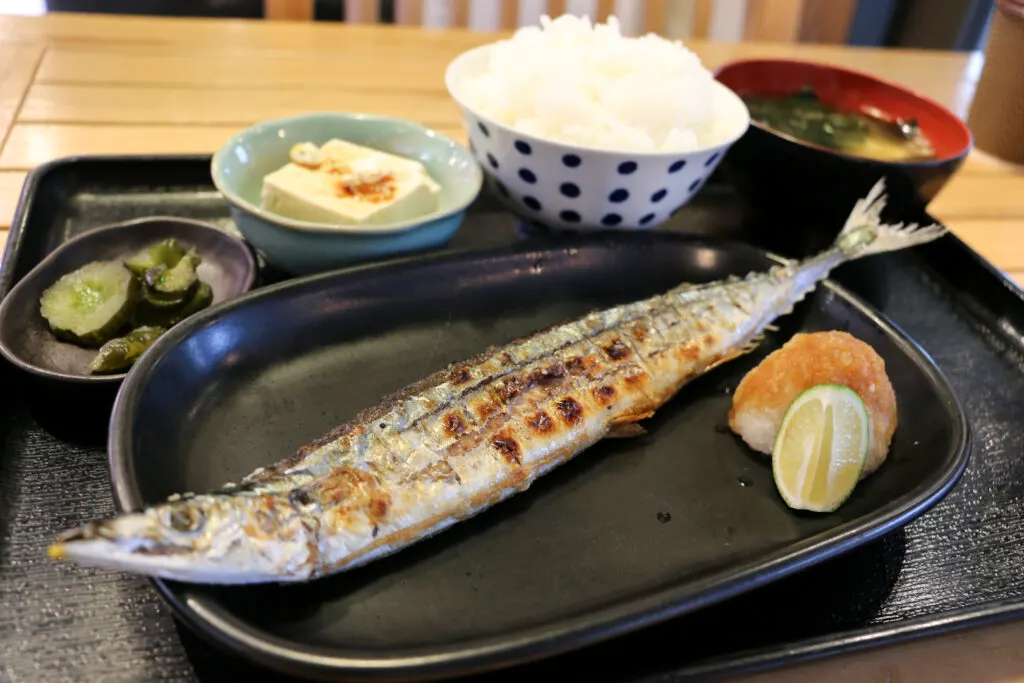
When August is almost over, local people get excited to celebrate the season with this fish.
The most common style of cooking sanma (秋刀魚, さんま, サンマ) is simply grilled with salt. If you can have it charbroiled (grilled over charcoal), that’s the best!
There are festivals in many fishing towns and the biggest festival is held in Onagawa in October. If you happen to be in Miyagi during this time, you can taste the best ones!
Where to try it: Restaurants serving sanma in Onagawa
Hoya, a.k.a sea pineapple
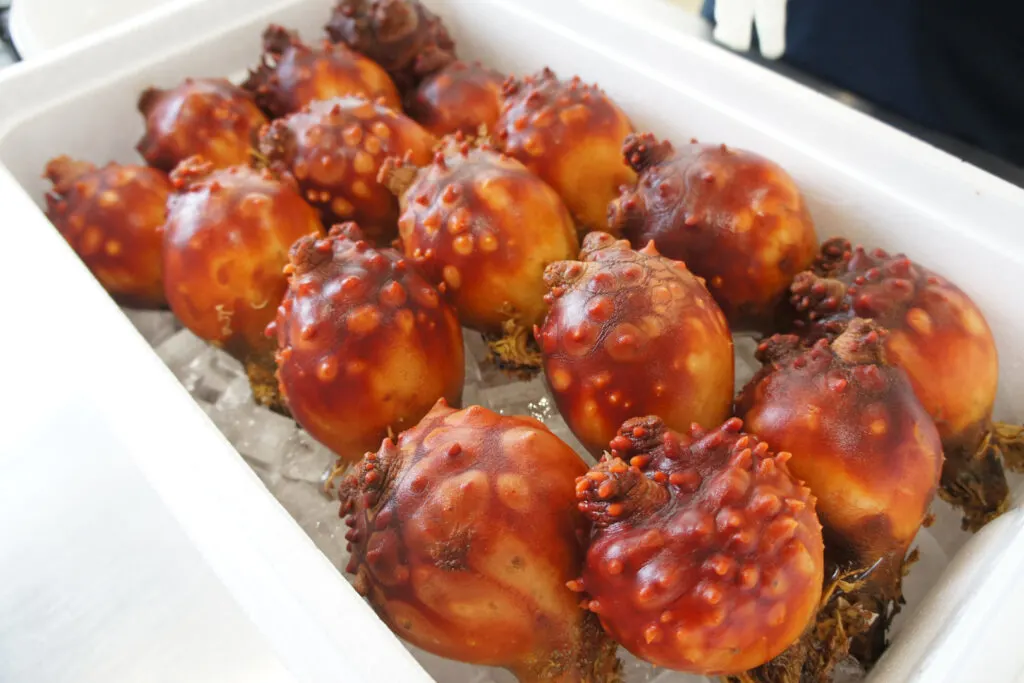
If you have the courage to try mysterious seafood, try this bright orange-colored hoya or sea squirt (海鞘, ほや, ホヤ).
You’ll either love it or hate it, but you’ve got to try raw hoya here because as time passes, they become increasingly bitter. Fresh ones are bouncy in texture and you will taste some sweetness too.
You can also enjoy it as sashimi, with vinegar, boiled or as tempura at local restaurants during the season (May to August).
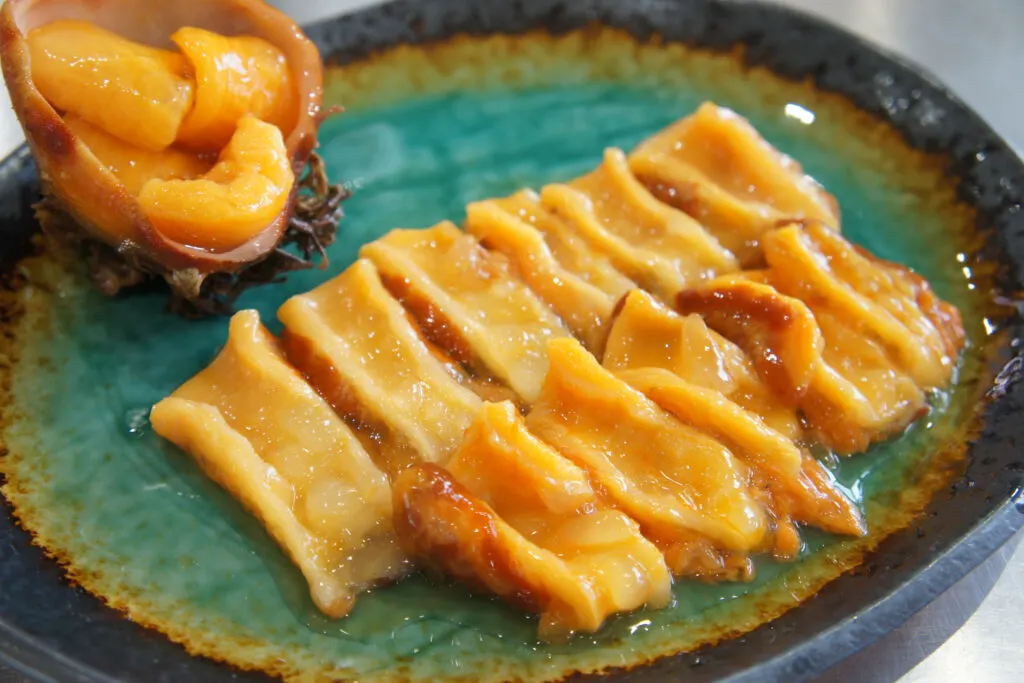
Oysters
Matsushima town is well known for farming oysters (牡蠣, かき, カキ). Needless to say, you will have fresh, milky raw oysters at the restaurants but if you want a unique experience, an oyster shack is fun to go to!
It’s all-you-can-eat steamed shelled oysters within a set time limit.
Where to try it: Matsushima Fish Market (Matsushima Sakana Ichiba)
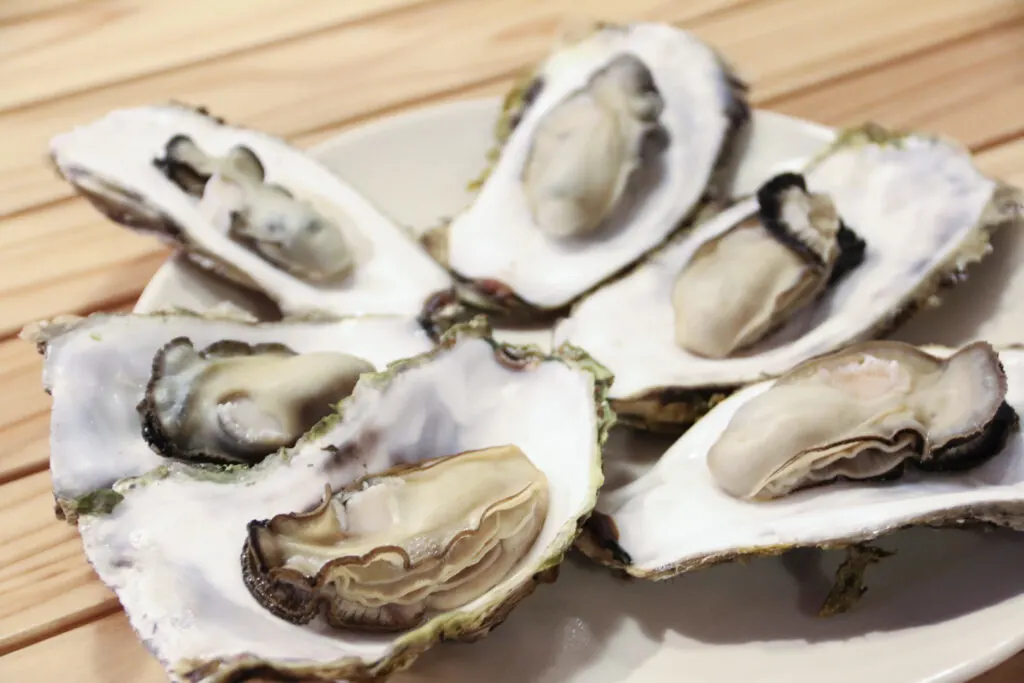
Branded Ginzake, farmed coho salmon
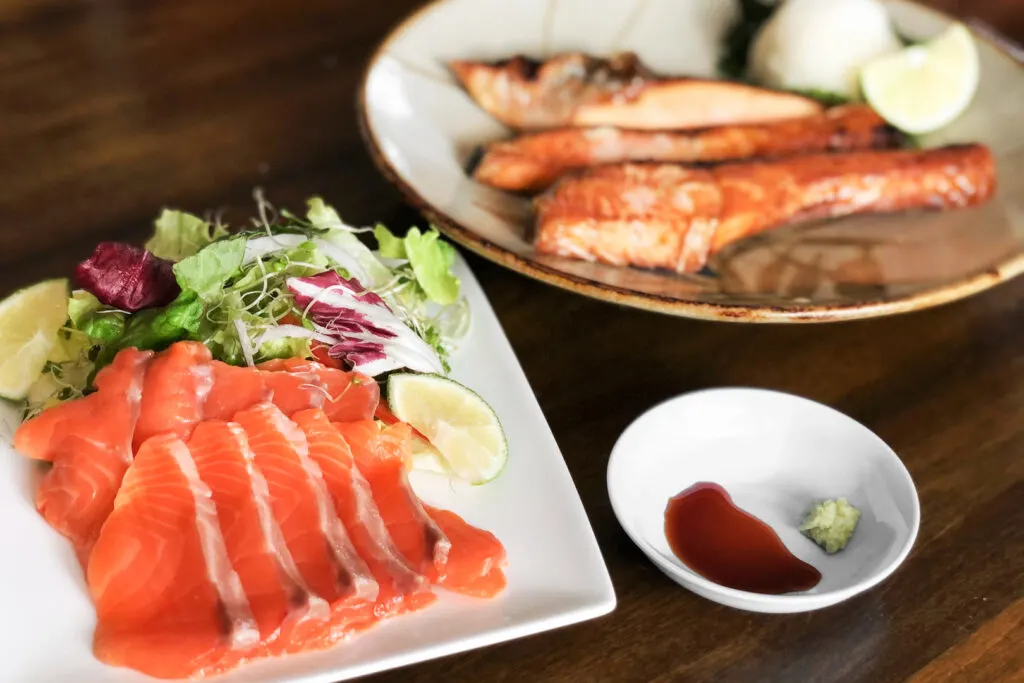
Miyagi Prefecture holds a staggering 90 percent share of coho salmon farming. Miyagi branded coho salmon is farmed under strict management to improve sustainability and ensure full traceability.
Look out for names like Ginō (銀王), Date no Gin (伊達のぎん), Miyagi salmon (みやぎサーモン) and Herb-fed Super Salmon (スーパーサーモン ハーブ育ち), all types of branded salmon in Miyagi Prefecture.
Where to try it: Recommended restaurant in Sendai
Shiso Maki, deep fried miso rolled in perilla
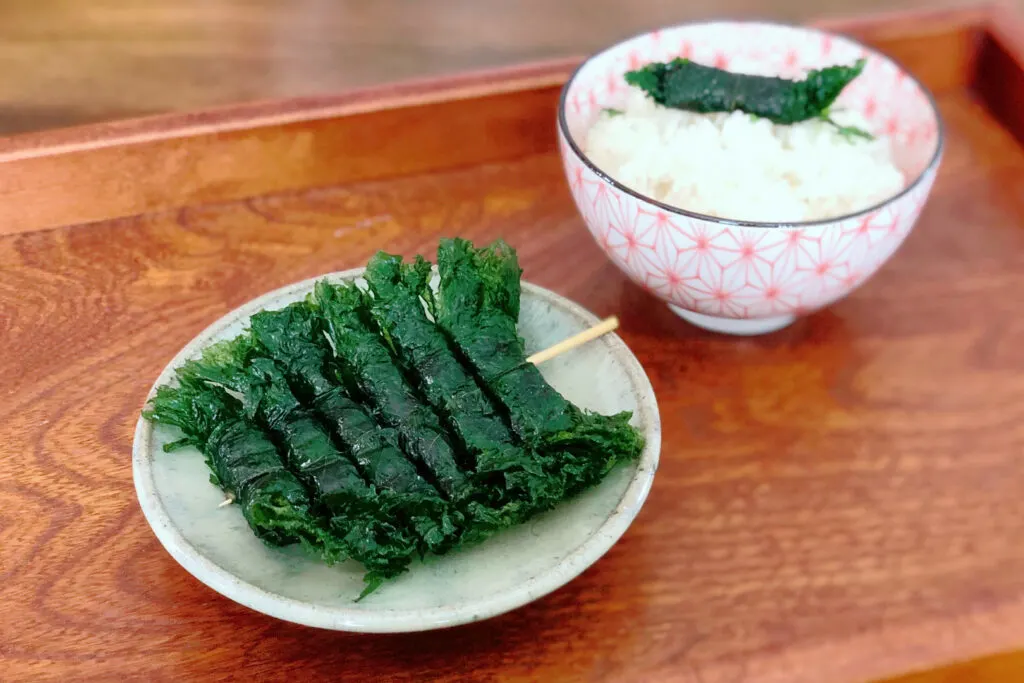
Shiso Maki (しそ巻き, しそまき) is Osaki city’s traditional dish. Sweetened miso paste and crushed walnuts are rolled in perilla leaves then deep fried.
The leaf is crispy but the miso inside is nutty and very dense; you can finish a bowl of rice with just one or two rolls!
Where to buy it: Shops selling Shiso Maki in Osaki city
Harako Meshi, seasoned rice with salmon and roe
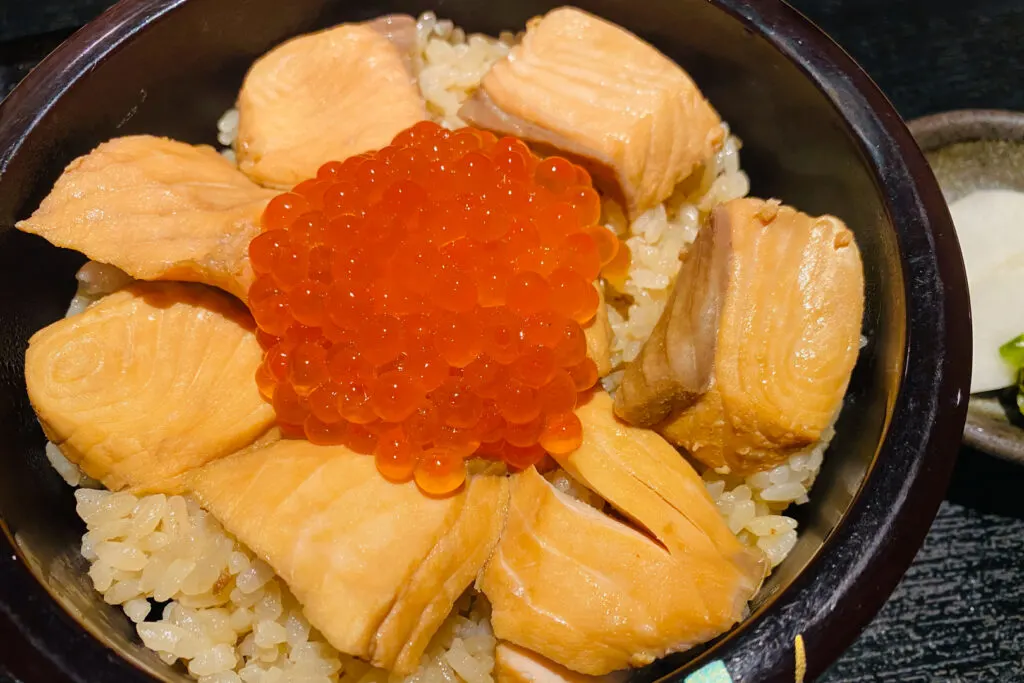
Watari town is located in the southeast and is famous for their local cuisine, Harako Meshi (はらこ飯, はらこめし).
Every fall, salmon go up the nearby Abukuma River to lay eggs and that’s the time each household or restaurant shows off their own best recipe!
First, sliced salmon and roe are cooked in a soy sauce-based broth. Then the salmon and roe are removed and the remaining seasoned broth is used for steaming the rice. Once the rice is done, the salmon and roe are placed back on top for a meal that is infused with the flavors of the fish and broth throughout.
It’s a seasonal dish available September through early December.
Where you can try it: Recommended restaurant in Watari (south of Sendai) and Asutonagamachi in Sendai
Sasa-kamaboko, steamed and grilled fish paste in bamboo-leaf shape
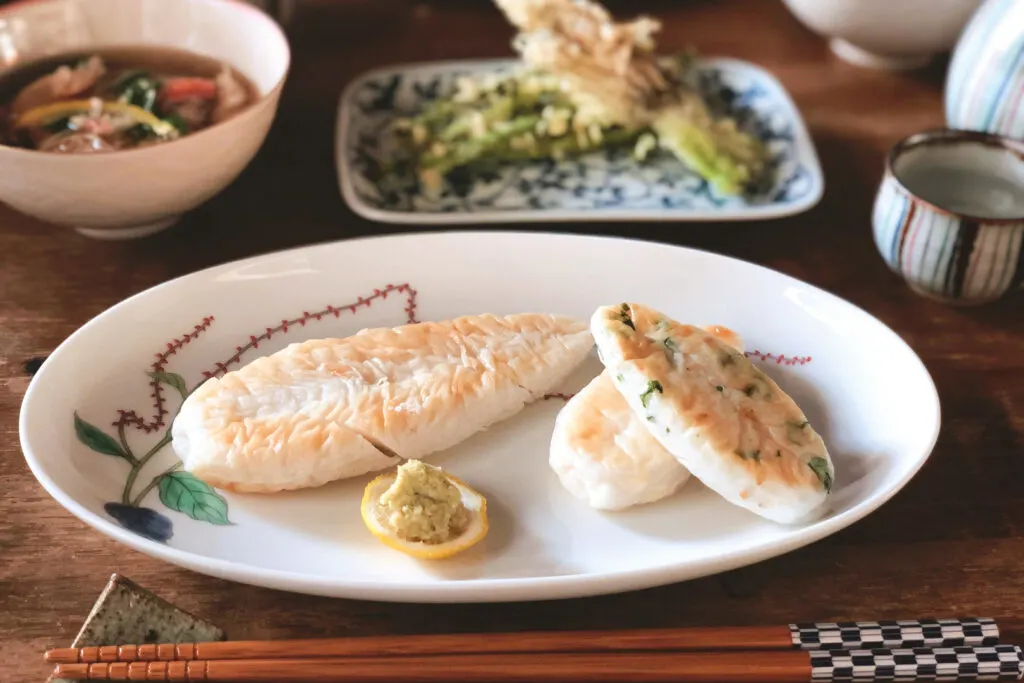
Kamaboko, or Japanese fish cake, is made nationwide, but this bamboo-leaf shaped Sasa-kamaboko (笹蒲鉾, 笹かまぼこ, ささかまぼこ – local people simply call it Sasa-kama) is a pride of Miyagi!
Sasa-kama is different because it is broiled or grilled at the end of the process which brings a rich flavor. Each company has their own variations, you can try and find your favorite. My favorite is Sasa-kama with cheese!
You can experience making Sasa-kama in Matsushima
Grilled Gyutan, grilled beef tongue
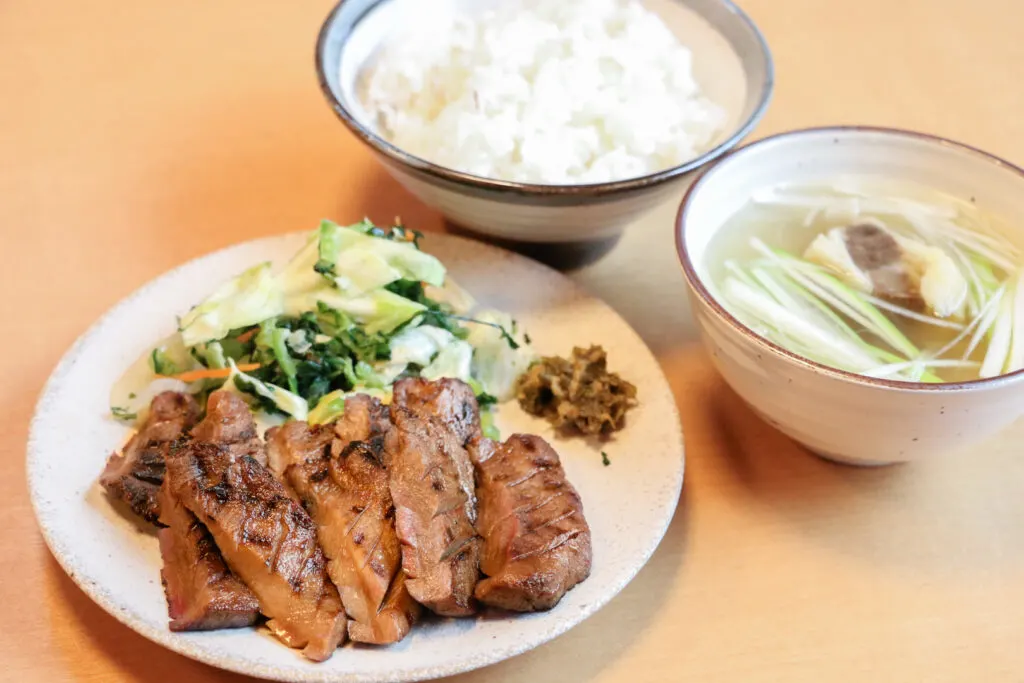
Sendai city is a mecca for grilled beef tongue. Called Gyutan (牛タン, ぎゅうたん, gyūtan), it is thinly sliced (but not too thin, this is what makes Sendai gyutan special!) and cooked on a charcoal grill.
You will see many Gyutan only restaurants in the city with a line of both locals and tourists. If you order a meal set, it comes with salted cabbage pickles, rice and oxtail soup which is a perfect match for Gyutan. Enjoy the smokey, bouncy texture!
Where to try it: Recommended restaurant in Sendai
Zunda mochi, mashed and sweetened edamame on mochi
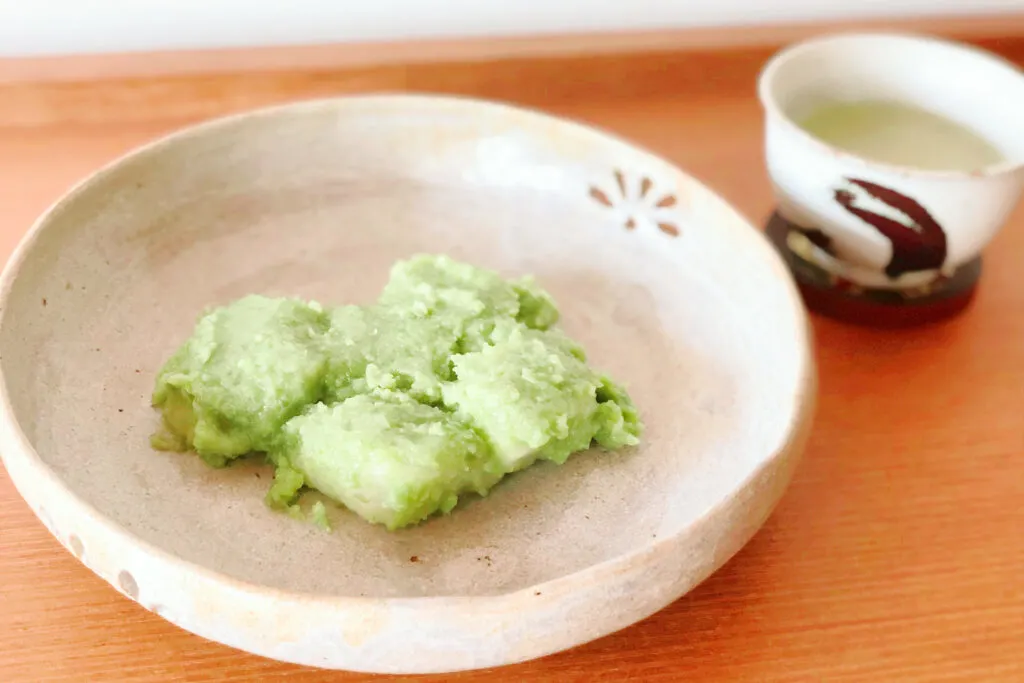
If you are a mochi (rice cake) fan, I definitely recommend you try this local green treat! The flavor is earthy, nutty, and a bit crunchy. You will be surprised it’s actually made from edamame (young soy beans)!
There are many zunda variations – zunda shake, zunda manjū, zunda chocolate – but traditional mochi style (ずんだ餅, ずんだもち) is a must-try!
Where to try it: Recommended sweets shop in Sendai
Shiroishi Umen, short and thin noodles
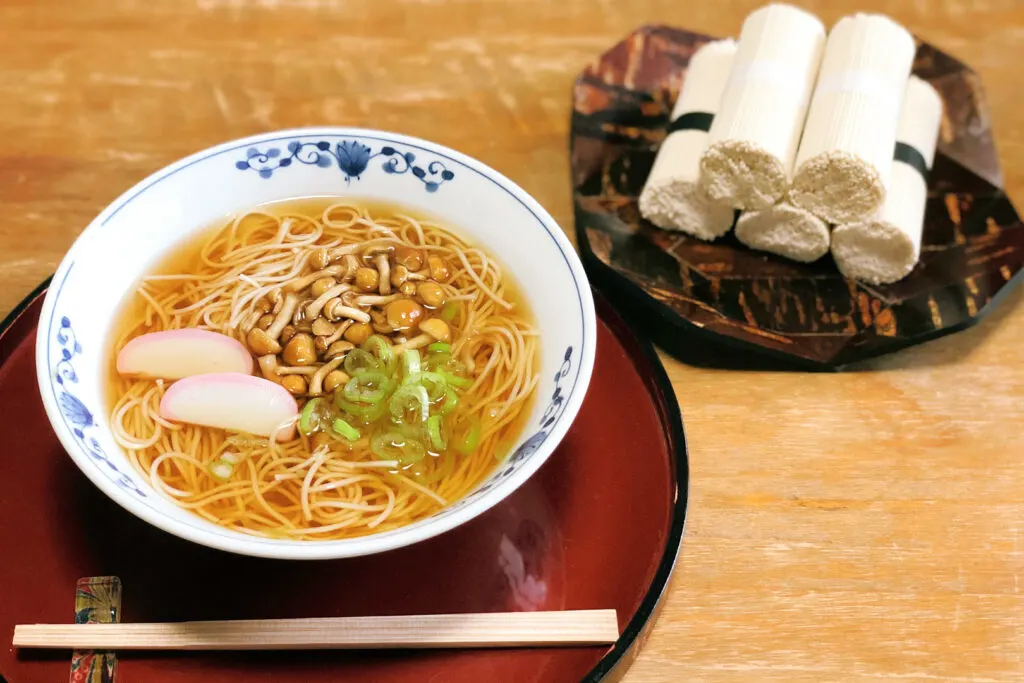
As the name suggests, Shiroishi Umen (白石温麺, しろいし・うーめん) is a noodle dish only made in Shiroishi city.
Unlike other noodles, no oil is used in the process of making it. With a history of 400 years, Shiroishi Umen was actually created when a son learned the method of making noodles without using oil for his sick father and he eventually recovered from illness.
“Umen” (ūmen) literally means ‘warm noodle’ but is named to praise a son’s devotion to save his father. It’s a comfort food, good in hot broth or as a cold noodle dipped in a separate dipping sauce.
Where to try it: Recommended restaurant in Shiroishi (southwest of Sendai)
Seri Nabe, Japanese parsley Hotpot
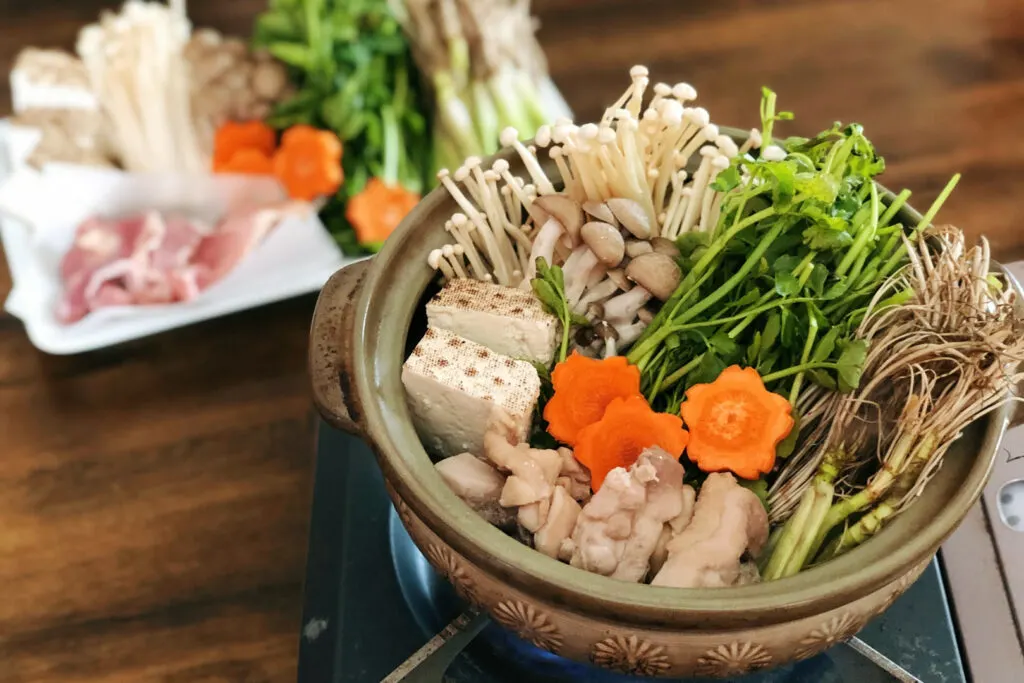
Miyagi is the top Seri producing prefecture in Japan. It has a slightly bitter and strong flavor with a crunchy texture and is used mainly as a side dish.
It is a recent trend to eat seri as a main dish in hotpot during winter and it’s so good! The interesting part with Seri Nabe (せり鍋, せりなべ) is, you will even eat its roots too. Fresh seri and chicken (oysters are popular in the Ishinomaki area) are served in a soy sauce-based hot broth; it will warm you up on cold days in Miyagi!
Where to try it: List of restaurants serving seri nabe in Sendai
Aburafu, deep fried wheat flour dough
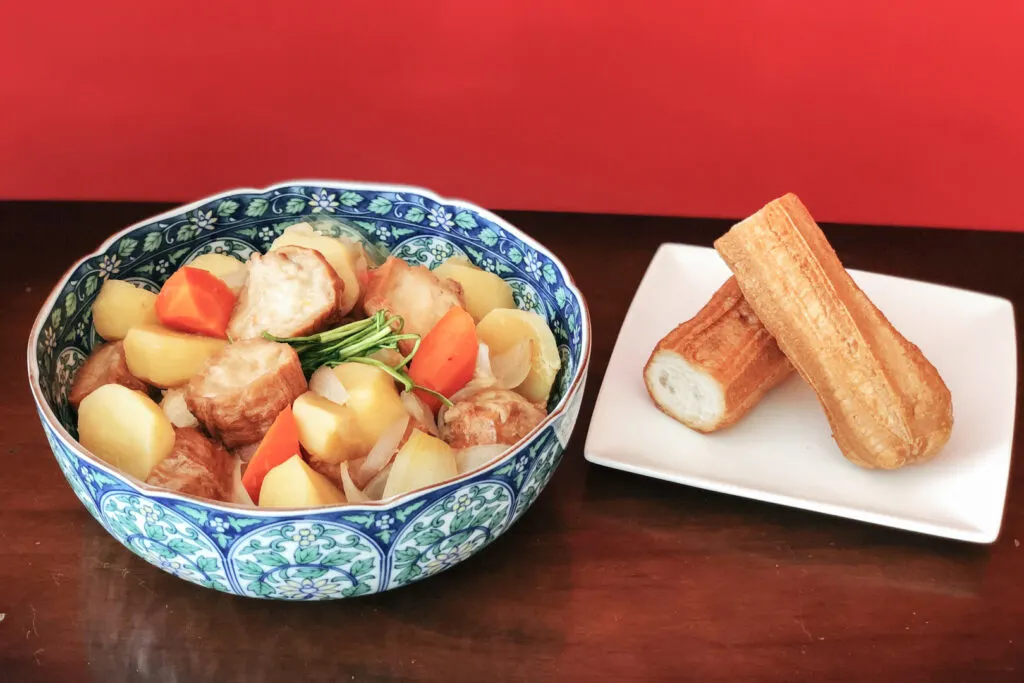
Aburafu (油麩, あぶらふ) is a traditional preserved food produced in Tome city. If you don’t eat meat or seafood, Aburafu is a perfect alternative.
It’s made from wheat flour (gluten) and is a formed dough that is deep fried in vegetable oil. It goes really well with soupy dishes as Aburafu absorbs liquid like a sponge.
Aburafu-don (aburafu on rice) is a very popular dish as an alternative to katsu-don (pork cutlets on rice), and is also great with Shiroishi Umen and Seri Nabe that I mentioned above!
Have you tried any of these dishes? Which one(s) would you most like to try on your next visit to Miyagi Prefecture?
Read more:
Sendai Food Guide: What to Eat in Tohoku’s Biggest City
A Guide to Onagawa’s Michi-no-Eki: Where and What to Eat and Drink in this Gorgeous Port Town
Pin me for later
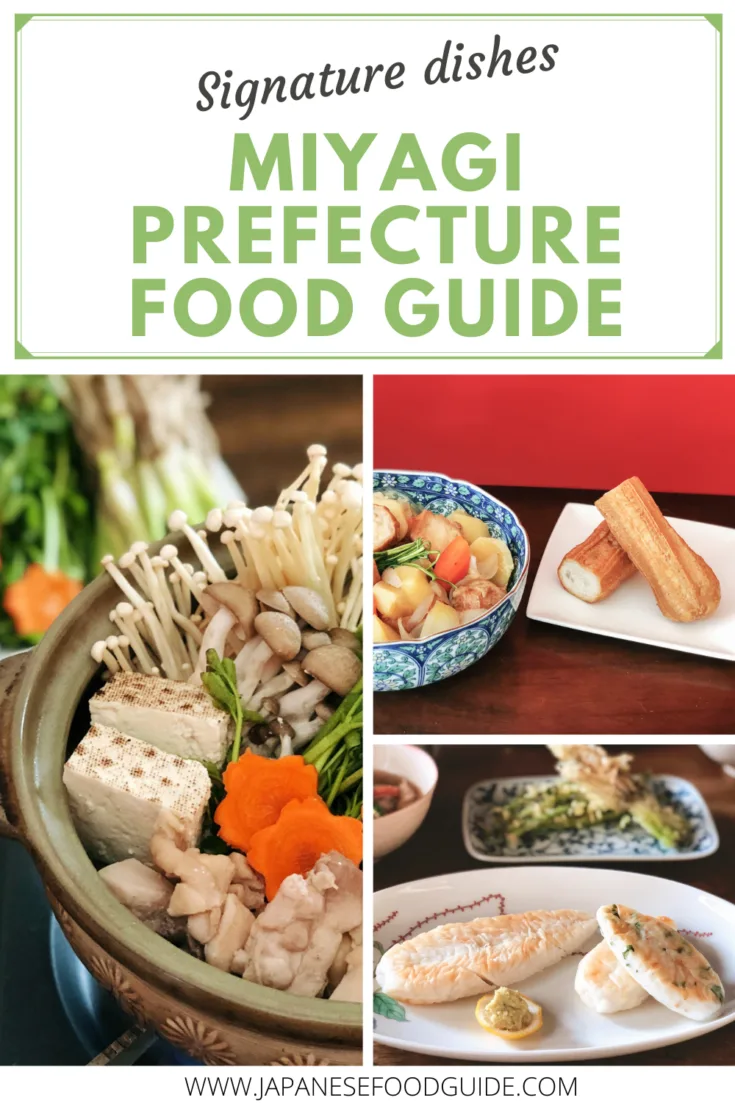
Masae is a Tohoku native who has been heavily involved in disaster relief efforts, particularly working with foreign volunteers, following the Great Northeast Japan Earthquake and tsunami in 2011. Since then, she has been rediscovering the wonders of her hometown in Miyagi, especially through food and drink.

Kaori
Tuesday 1st of February 2022
Wow I knew of most of the seafood/meat dishes but hadn't heard about seri nabe or Shiroishi umen, which is perfect for me as a vegetarian! I'm heading to Miyagi in the spring so hope I get to try them then :)